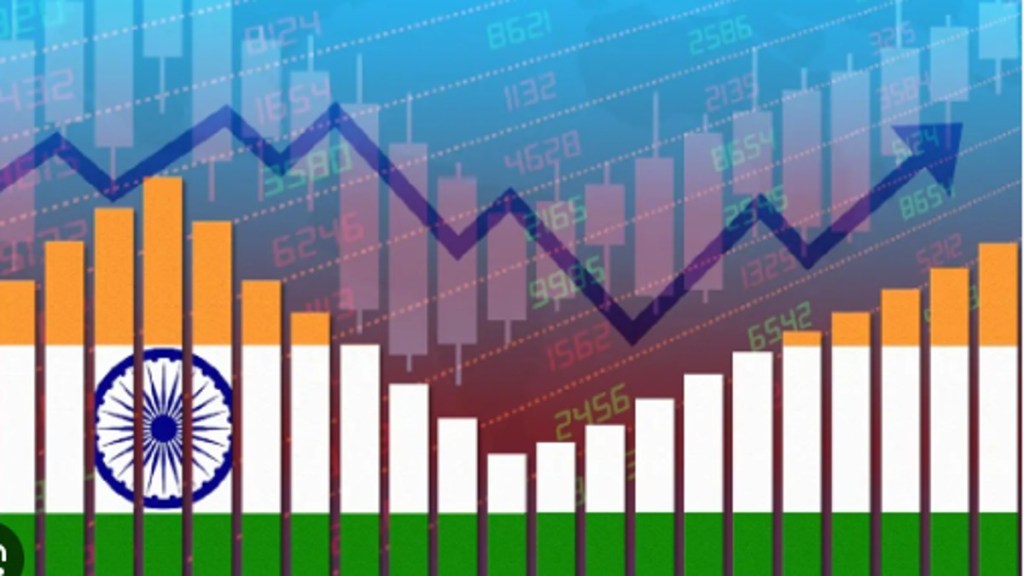By Pooja Misra
The recently released Q1 GDP numbers for FY25 show the world’s fastest-growing emerging economy grew at 6.7% as against 8.2% in the previous year. As anticipated the growth slowdown is a reflection of the low government spending on capital expenditure due to the general elections and the dismal performance of the agricultural sector which has grown at 2% in Q1FY 25 as against 3.7% in Q1FY24.
The good news is the narrowing gap between gross value added (GVA) numbers at 6.8% for Q1FY25 and the gross domestic product at 6.7% for Q1FY25 for the country. This can be attributed to increased government spending on subsidies. The numbers for Q4FY24 showed GVA at 6.3% and GDP at 7.8%. GVA, a measure of the value of goods and services produced in the economy post deduction of the cost of raw materials and inputs, shows the primary and tertiary sectors have slowed down in Q1FY25 as against Q1FY24 (Primary sector which consists of agriculture, livestock, forestry and fishing, mining & quarrying grew at 2.7% in FY 25 as against 4.2% in FY24; Tertiary sector consisting of trade, hotels, transport, communication, financial, real estate & profession services and public administration, defence etc. grew at 7.2% in FY25 as against 10.7% in FY24). The dampener in the tertiary sector being the financial, real estate & professional services which grew at 12.6% in Q1FY24, has slowed down to 7.1% in Q1FY25.
However, the bright spot is the secondary sector which has grown at 8.4% in Q1FY25 as against 5.9% in the same quarter previous year. All three components of this sector ie manufacturing, electricity, gas, water supply and construction are reflective of increased activity. Interestingly, with investments by households in the real estate sector gaining considerable momentum, this augurs well for the construction industry. To further corroborate, data released by the Reserve Bank of India in early August 2024 shows capacity utilization in the manufacturing sector increasing to 76.8% in Q4FY24 from 74.7% in the previous quarter, a reflection of general economic activity gaining steam and picking up.
Also read: Union Budget 2024: A blueprint for sustainable growth and development
The silver lining on the wall is a growth of 7.4% in private final consumption expenditure in Q1FY25 as against 3.9% in Q4FY24. With the festival season round the corner and scheduled to begin towards the end of Q2 and continuing until early Q4, household consumption is only expected to increase. Brands and companies should consider employing the ‘Nudge theory’ as a strategy to entice consumers. Nudges are physical cues that encourage individuals to conduct in a specific manner without explicitly advocating for any particular behaviour.
However, with the nation striving towards being a Viksit Bharat by 2047, it would only be right to state that we have miles to traverse still. While there have been multiple debates on food inflation continuing to be a worrisome point for the citizens, Government and Central Bank alike, structural reforms undertaken on the supply side can considerably ease the same. Setting up of godowns and cold storage warehouse facilities, increasing the area under irrigation, diversification in crops being sown and cultivated with the needle moving more towards cash crops are all efforts in the right direction. As per a Niti Aayog report of 2022-23, only 52% (now 55% in 2024) of India’s gross sown area has access to irrigation facilities wherein 40% of the irrigated area is watered by canal systems while remaining 60% is watered by groundwater. Expanding irrigation infrastructure, particularly in arid agricultural areas like Telangana and Andhra Pradesh, can aid in alleviating the growing effects of hotter summers and inconsistent monsoons, which are partially associated with the climate crisis.
Thus, with food inflation coming under control (an outcome of supply-side measures), the Central Bank can look towards bringing down the key policy rates. Theoretically, low interest rates lead to increased investment levels as it serves to bring down the cost of production for businesses. However, the fine print is that even at moderately high interest rates with private final consumption demand existing in the economy and the prevalence of a conducive business environment, private investment expenditure is only set to increase.
Thus, it only makes sense to reiterate the fact that with the nation being at the cusp of and vying to increase household demand in the economy, key structural reforms in terms of labor and land reforms, bridging the skill-development employability gap, focussing single-mindedly on increasing employment opportunities, investing in education, health, mitigating adversaries due to climate change and focussing on urban development are all steps in the right direction. The PM has aptly stated that this is the time for the nation to not only reform but also perform.
(Pooja Misra is a Professor in Economics and Area Chair at the Birla Institute of Management Technology, Greater Noida. Views expressed are the author’s own and not necessarily those of financialexpress.com.)


